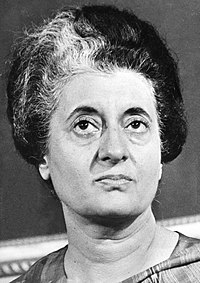
Photo from wikipedia
Existing scholarship on the Emergency’s sterilisation programme largely excludes women’s experiences, echoing the Shah Commission of Inquiry’s focus on men’s complaints against the government in its published reports. This paper… Click to show full abstract
Existing scholarship on the Emergency’s sterilisation programme largely excludes women’s experiences, echoing the Shah Commission of Inquiry’s focus on men’s complaints against the government in its published reports. This paper re-orients historical understandings of this programme to account for female sterilisation during 1975–1977. By reading the Commission’s extensive collection of archived files against the grain, I use the male-dominated archive to illuminate the gendered nature of this policy and its effects on India’s women. Against dominant perceptions that the Emergency’s sterilisation programme focused entirely on vasectomy, this paper discusses instances where women were critical in families’ attempts to negotiate the regime’s coercive measures. It also analyses the negative impacts of coercion on the ‘girl child’ and the consequences of the Emergency’s single minded focus on sterilisation for the Mother and Child Health programme. Through these discussions I argue that such measures exacerbated existing gendered biases. In doing so, this paper challenges dominant understandings of the Emergency’s sterilisation programme and explores women’s experiences.
Journal Title: Contemporary South Asia
Year Published: 2017
Link to full text (if available)
Share on Social Media: Sign Up to like & get
recommendations!